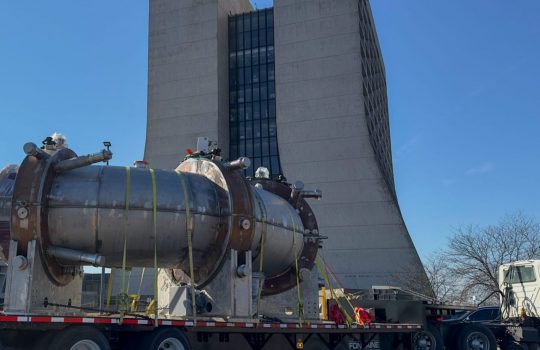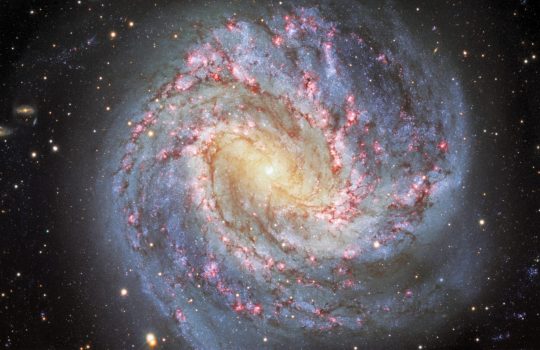At a collaboration meeting in San Rafael, Argentina, scientists of the Pierre Auger Project, whose goal is to discover the source of very high-energy cosmic rays, today (September 13) announced the choice of the project’s northern-hemisphere observatory. The 150-member collaboration will build a Rhode-Island-sized detector array in Millard County, Utah to observe the air showers from mysterious high-energy cosmic rays that zoom to earth. In November, 1995, the Auger Project chose a site near Mendoza, Argentina, for the project’s southern-hemisphere observatory.
“We are beginning a new astronomy where the ‘light’ is not electromagnetic radiation, such as radio waves, visible light, or gamma rays, but protons and nuclei,” said Nobel laureate physicist James Cronin, leader of the project. “Because the sources of these cosmic rays are unlikely to be uniformly distributed in the sky, it is essential to observe the whole sky to locate the sources of these cosmic rays. Each Pierre Auger Observatory can be likened to a telescope with a very wide field of view. With observatories located at mid-latitudes in both hemispheres, we can observe the entire sky as the earth turns.”
Collaborators chose among proposed sites in Spain, Mexico, and Utah. “The Utah site meets the requirements of the Auger Project very well,” said physicist Paul Mantsch of Fermi National Accelerator Laboratory. “It is an excellent site. We are now eager to begin the design and construction of the two observatories.” Collaborators said that existing infrastructure, including roads and a nearby power plant, influenced the final choice. “It was a close vote. The Mexican site in particular had many good features,” Mantsch said.
Cosmic rays are fast-moving particles from space that constantly bombard the earth from all directions. These particles, usually protons, strike air molecules in the atmosphere, creating cascades of secondary particles, called air showers. The Auger Project takes its name from the discoverer of extensive air showers, French physicist Pierre Auger, who first observed the phenomenon in 1938. Scientific theory can account for the sources of low- and medium-energy cosmic rays that strike the earth, but the origin of the rare high-energy cosmic rays remains a mystery-one that Auger collaborators hope to solve.
The Auger Project’s two observatories will measure the nature, energy and direction of these high-energy cosmic rays-the most energetic particles in nature, with more than 100 million times the energy of particles produced by the most powerful particle accelerators on earth. Physicists hope that tracking these rare particles will reveal the source of their enormous energies and provide new insight into the evolution of the universe itself. “The sources that we discover will have to be objects with unique properties,” Cronin said. “No known astrophysical objects have the properties required to produce cosmic rays of such high energies. Thus, we will make new discoveries in astrophysics or particle physics, or both.”
Each Auger observatory will contain 1,600 particle detectors, special 3000-gallon water tanks spaced 1.5 kilometers apart over an area of 3,000 square kilometers. An optical fluorescence or “fly’s eye” detector will sit at the center of each array. The Auger Project hopes to begin cosmic ray observations early in the next century. Collaborators estimate the cost of constructing the observatories at approximately $100 million.
The collaboration includes scientists from 40 institutions in 19 countries. “I believe the Auger project is providing the rare opportunity for scientific collaboration on an equal footing between developed and developing countries,” said physicist Alberto Etchegoyen, spokesman of the project’s Argentine group. “We aim at constructing two similar observatories, one in each hemisphere, with a collaboration spread over the world. Hopefully we are undertaking a path that future international scientific collaborations will follow.”
Funding for development of the Auger Project comes from the United Nations Educational, Scientific, and Cultural Organization and from science agencies of participating nations. The project includes scientists from Argentina, Armenia, Australia, Bolivia, Brazil, Chile, the Peoples Republic of China, France, Georgia, Germany, Greece, Japan, Mexico, Russia, Slovenia, Spain, the United Kingdom, the United States, and Vietnam.



